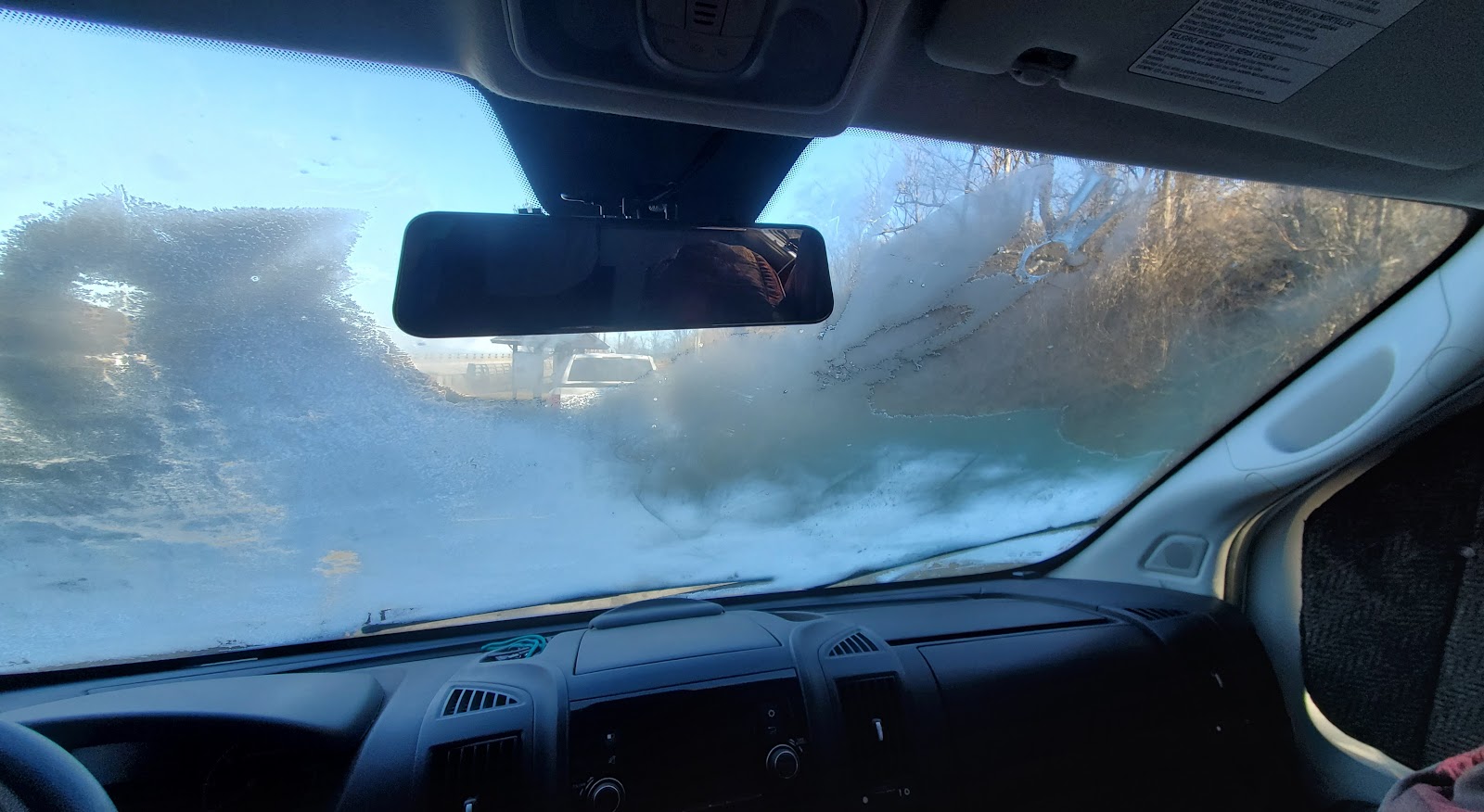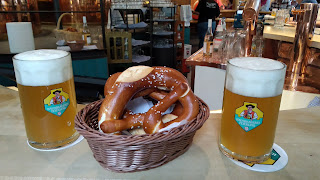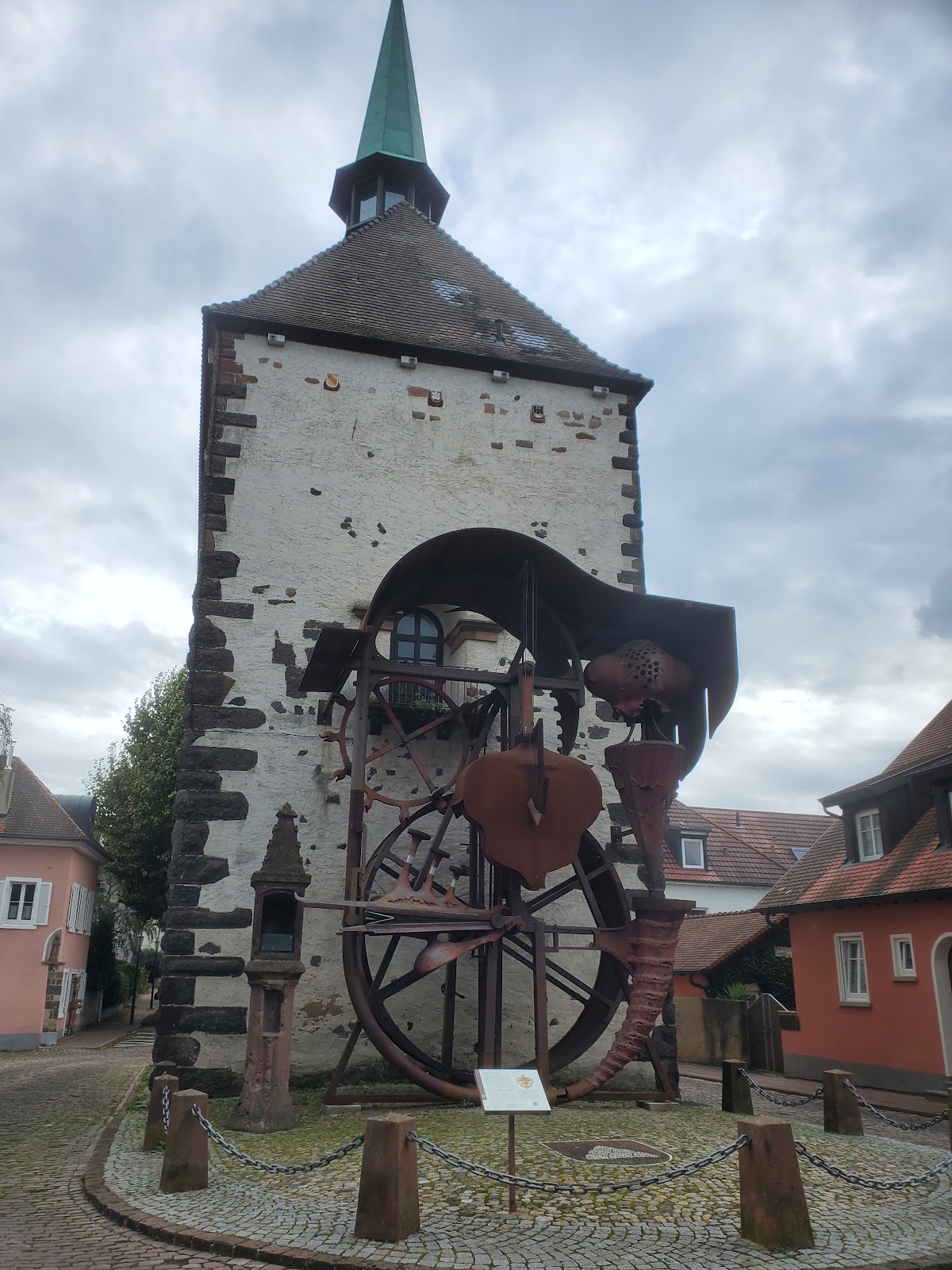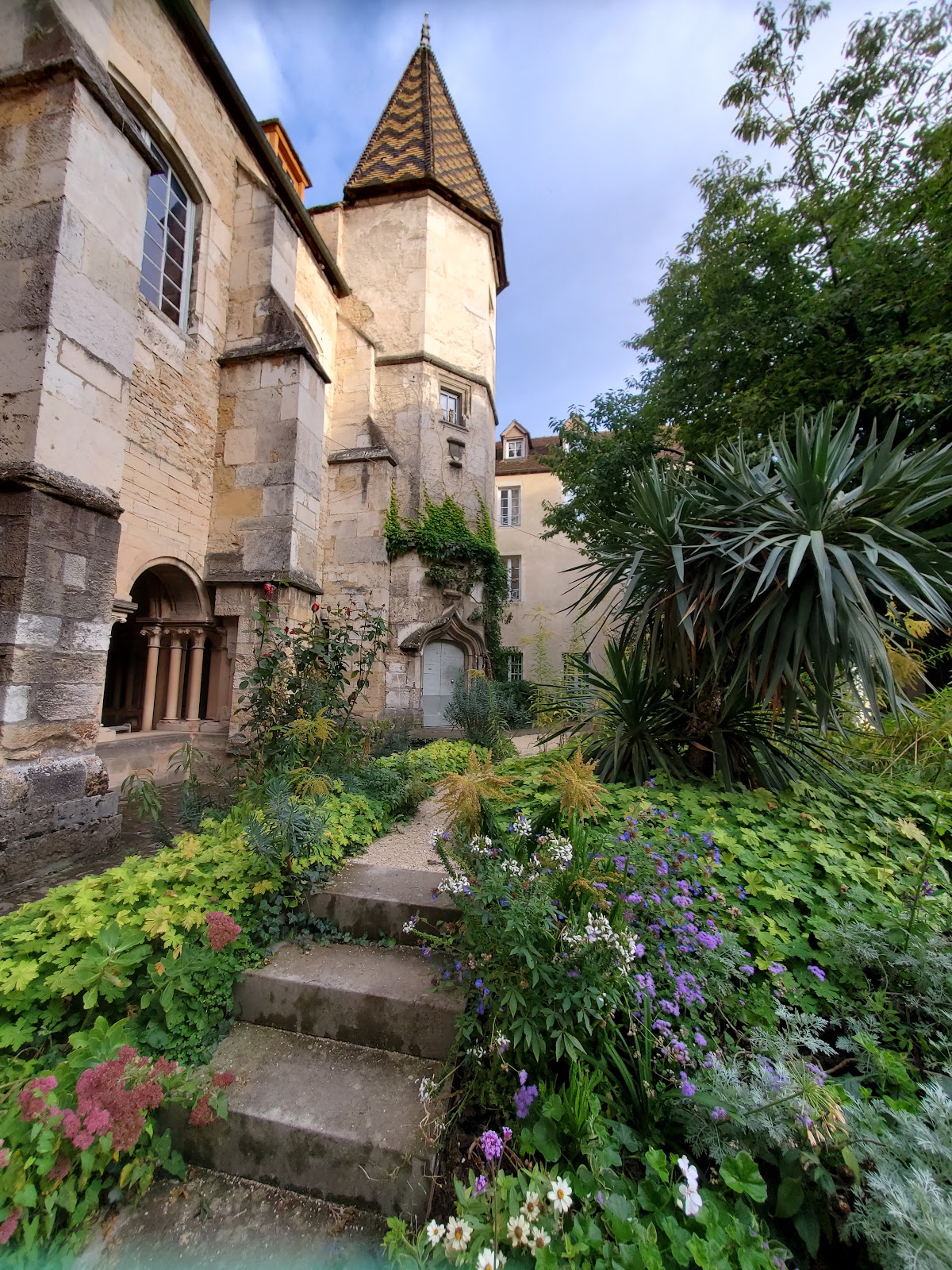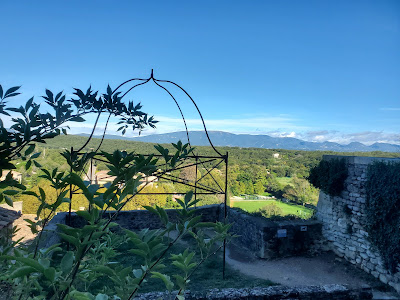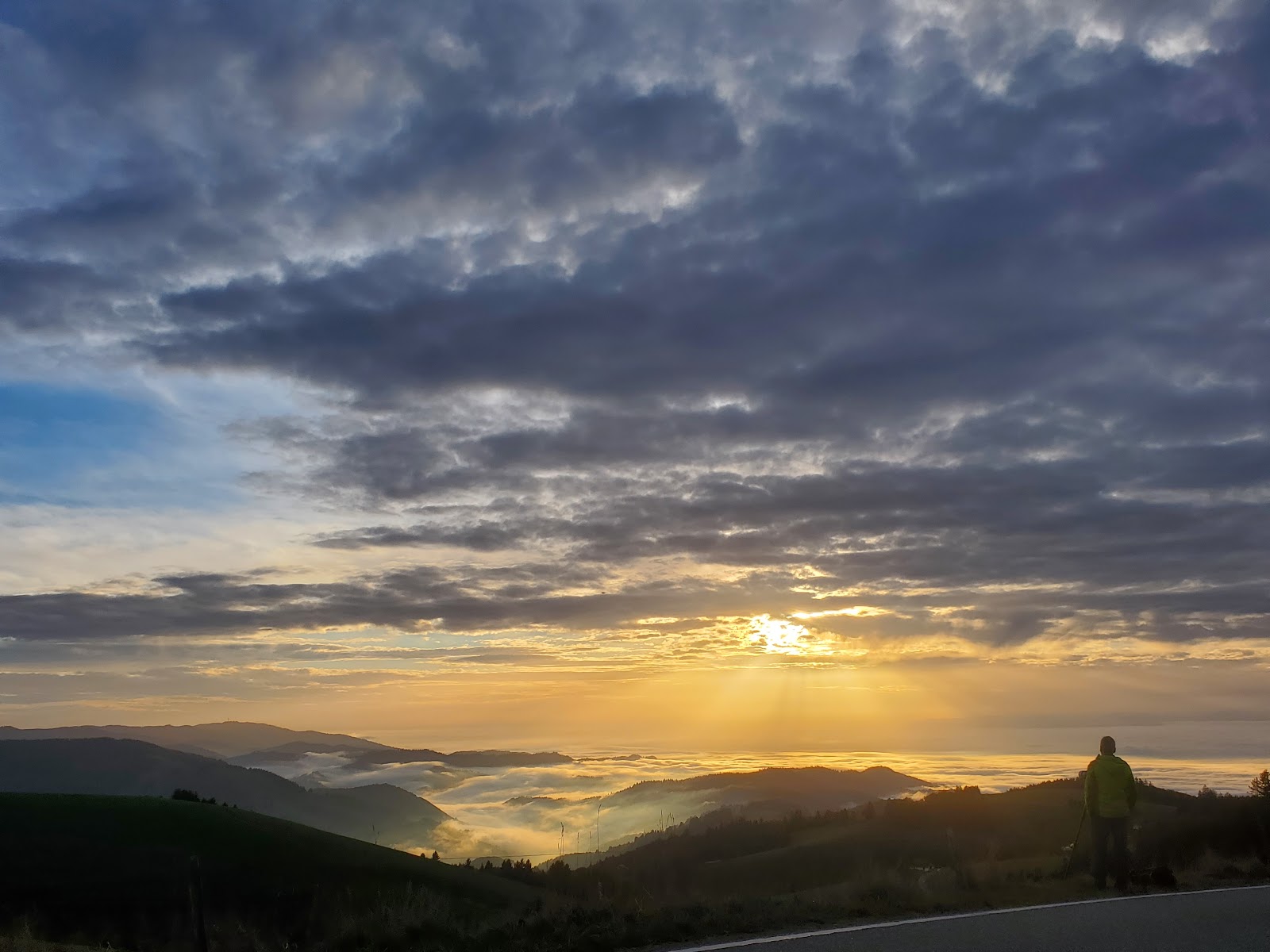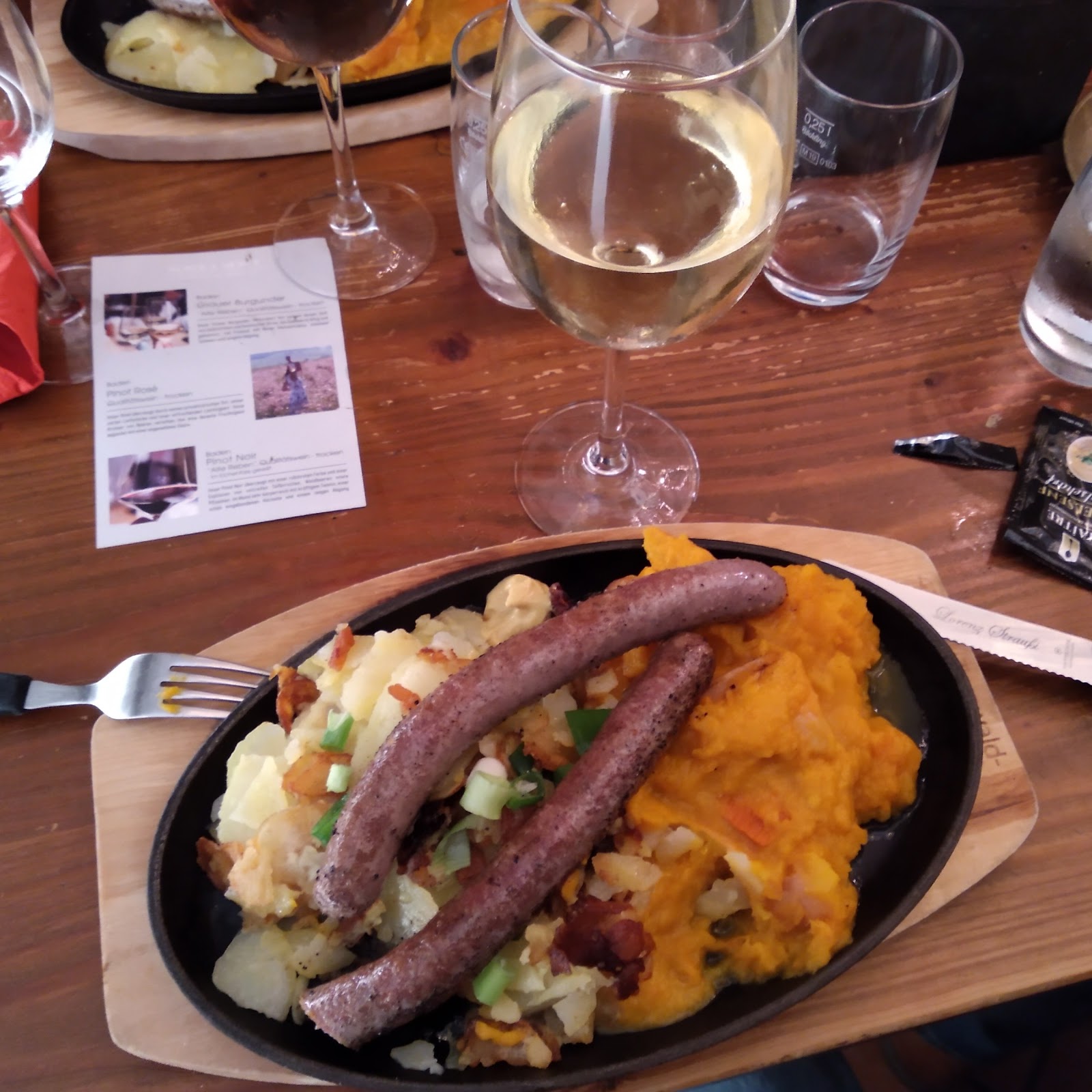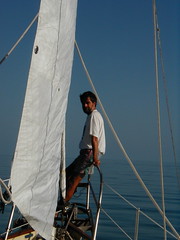Leaving Ontario in February is not easy: front after front brought snow and this year's unrelenting cold made us fear we would not make it. But we had a short lasting weather window and managed to "stuff" the van with camping gear, kayak gear and clothing. Not an easy task when it is the first time that you actually use a vehicle!
But as usual, we made it.
Leaving Canada, we passed over the St. Lawrence River at the 1000 Island Bridge. Winter still in effect!
Our goal was to make it to Scranton, PA and overnight on the Petro's trucks plaza. The first night was definitely very chilly with a temperature of -7C! We hoped that our diesel heater would keep us warm throughout the night...And it did! We cranked it to Level 3 (out of 6) in the early morning hours and it performed flawlessly! Congratulation Heiner!!!!
Of course, when removing our window coverings, the windshield was iced over!
Our next stop was in the area of the Blue Ridge parkway, in Afton,Virginia. The weather was nice but it got
very windy. The camper shook until 2 am and then it became quieter. The area was badly damaged by the storm Helen in the fall of 2024 and parts of the Blue Mountain Parkway were closed. We had to choose an alternative road, along the valley, east of the Parkway, until South Carolina. We wanted to overnight on a Walmart in Cheraw, SC. However, the "No Overnight" parking signs made us to move on and to the area of Florence, SC, staying at a Cracker Barrel parking lot. This was our first experience of Cracker Barrel overnight parking and we loved it. This restaurant chain has parking spots for RV's at each of its locations! It was to become our favourite go-to overnight parking while on the road.
We finally made it to Beaufort, SC. Always pretty, and flowers were starting to bloom.
In Georgia, we decided to overnight in Blufton at the Oyster Company! We were salivating at the thought of having fresh oysters...until we discovered that the fishery place was not a restaurant (or no more). The real (or new) restaurant was located a few blocks away from the waterfront, and, unfortunately, closed on Mondays!
Blufton had a large and very pretty parking area where we were the only one to stay for the night.
Further along the Georgia coastline, we spent 2 days in St Marys. There, one can park up to 36 hours at the waterfront ! A delightful place and very popular among the RVers. We enjoyed taking our bikes out and did a few kilometers in the oak lined streets of St Marys.
What we liked in St Marys is the serenity of the place. Beautiful sunsets over Georgia swamps...
In the past years, we stayed at campsites in Brunswick and Fort McAllister. But this year, we decided to be more autonomous and this was a very positive experience!!!
Before heading to our Donald MacDonald campsite, we had another free overnight in Titusville, Florida. Park4night indicated a possibility to overnight in the marina park of Titusville. It was a neat place and we were the only one to stay the night. We felt a bit unsure because a sign was mentioning the need of a permit for longer stays in the park. I wrote Titusville recreation department and they suggested I contact them by phone. However, as it was Friday and I got my response late in the afternoon, we decided to take a chance and to overnight without special permit! No sheriff or security showed up. It was a mild and quiet night overlooking the Indian River lagoon.

Upon leaving Titusville, we went to Cocoa, Florida. Last time we were there, we had a great time with our sailing friends Ulrike and Thomas, and the place was alive with music and street merchants. This time, although it was Saturday mid-morning, the place was asleep! We sat down for a pizza lunch and drove on the waterfront road lined with beautiful houses and gardens.
Next night, we pent in Sebastian Florida. Not at the campsite but at the Walmart parking lot. It is really a quaint space lined with trees, and we had a good night there. In addition to other campers, there were also some locals who appear to live in their cards. Next morning, instead of having our coffee in the camper, we drove to our favourite Atlantic beach at the Golden Sand Park, parked in a still empty parking lot, and took our freshly brewed coffee to the beach, enjoying a magnificent view of the ocean.


The water was still a bit chilly given that the winter had been quite cold in Florida up until now. The sea was calm and we braved teh cold and had a nice swim in the Atlanic. While walking, we had a bit of an unsettling sight: a young shark swam quite close to the beach (2 meters away)! Nevertheless, we took to the water, however, out of prudence, in the area monitored by life guards (and with other people in the water!!!). A few days later, we learned that only a few miles further south (Vero Beach), the beach had been closed for swimming due to the presence of fully grown sharks near the shore.
For the next week, we returned to our favourite campsite in Sebastian Florida. We had site #17 and it was very private and ideal for our vehicle and the day tent.
The campsite was not busy at all. Facilities were quite clean. And we enjoyed our kayaking, biking and beach activities during 8 full days, alternating our activities depending on weather, winds and physical condition!
Evenings were quiet and we never grew tired of sunsets on the Sebastian river.
Kayaking is never without excitement! This year, plenty of large alligators but the highlight was the number of manatees that we found on the river! We never saw so many...and never had them swim under our kayak! We were worried that they would tip our kayak when surfacing. No pictures of manatees; alligators are easier to take pictures of...
On our other visits to the beach, we had most of the time settled weather which invited us for to go for a dip, except on one day where the winds were really strong and the red flags suggested we might be better off walking than swimming!
Our biking excursions were mostly at the Sebastian Reserve Park and in Sebastian itself, often ending at the Capt Hirams Sandbar restaurant for a refreshing beer.
On our way to Withlacoochee Campsite, we made two stops. The first one was in Deland, a small university town that we drove through last year. Maybe due to March break, there was very little activity in the town. Restaurants were closed...and there was really nothing stunning. Except sunflowers (!) and the garden alley ( one small lane) with older wooden houses and smart gardens.
That night, we overnighted again on a Cracker Barrel parking lot in Orange City. Very quiet and a very pleasant place to be.
Next day, we explored Lake Apopka. That was a discovery! Heiner had learned about it on Youtube and we were enthusiastic! The weather was sunny, around 20C and we could not have asked for better conditions! What an experience! The photos don't really do justice to the experience. There were so many alligators close to the trail (we may have seen about 50 or so, sometimes a bit too close for comfort!) and so many birds!!! We never can approach blue herons that close in such a way here. It would seem that these creatures have all got accustomed to cyclists...
After such a beautiful drive, we went to Ocoee Planet Fitness ( excellent facility) for a refreshing shower and drove back to Orange city for overnighting.
From March 19 to March 24th, we revisited the Withlacoochee State forest campground, more precisely the Hog Island campsite. There again, we enjoyed biking on the Croome Trail and kayaking on the Withlacoochee river.
The launching site for kayak on the Withlacoochee river is such a beautiful place.
And the magic operates for the whole stretch of the river.
With some interesting wildlife...
We then began our slow way north. After checking on the status of the Blue Mountain Ridge Highway (open!), we decided to take this drive through Virginia.


Despite the strong winds and a very cool temperature, it was sunny and we had great views of the mountain ranges, with a maximum height of 3700 feet above sea level. When we started we had about 10C, reaching the top, it was just about the freezing mark. We started in Roanoke Virginia and stopped in Afton, Virginia. The next part of the parkway belongs to the Shenandoah Valley Park and fees are $30.00 per RV to drive further up north to Port Royal. We figured, this stretch will not be different to what we had just done and drove, instead, down into the valley along Country Road 340 and enjoyed the flowery trees and milder climate.
That night, we went to another Cracker Barrel (Front Royal): always welcoming, this chain of restaurants is really great for RVs because one is certain to be able to spend a night undisturbed. In the past, Walmart stores appeared to have invited RV travellers, which seems to be less and less the case over the last years.
Forcast for the drive up north towards Kingston sounded good for the next day, but not so for the days after. So, we decided to have an early start and drive through in one shot, i.e. 12h on the go.
Happy to be back home!

Ps. We decided not to comment on our feelings as a Canadian traveller on this trip. Thanks to the advice given by the Canadian government.





